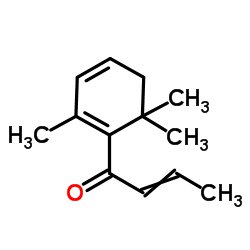Use of solid-liquid distribution coefficients to determine retention properties of Porapak-Q resins. Determination of optimal conditions to isolate alkyl-methoxypyrazines and beta-damascenone from wine.
L Ortega, R López, J Cacho, V Ferreira
Index: J. Chromatogr. A. 931(1-2) , 31-9, (2001)
Full Text: HTML
Abstract
The solid-liquid distribution coefficients of different analytes--all of which are important aroma compounds--between hydroalcoholic solutions or wines and different sorbents have been determined by measuring the amount of analyte removed by a given mass of sorbent in equilibrium with a given volume of standard solution. These data have shown that the best extraction conditions for non-polar compounds from wine are the use of Porapak-Q resins and 6% (v/v) alcoholic solutions. Phase ratio, hold-up volumes and number of plates for Porapak-Q beds have been measured in different experiments. With all these data it has been possible to calculate breakthrough volumes in good agreement with experimental results. The Lövkvist-Jönsson model is more appropriate for estimating breakthrough volumes of a 2-cm Porapak-Q bed. The model estimates that a 5-cm bed is needed to achieve a quantitative recovery of 3-alkyl-2-methoxypyrazines and beta-damascenone from 500 ml of wine (diluted to 1000 ml with water). Experimental results confirm the predictions of the model and show that in a single isolation step detection limits below 10 ng/l can be reached for these compounds using GC-MS detection.
Related Compounds
| Structure | Name/CAS No. | Molecular Formula | Articles |
|---|---|---|---|
 |
Damascenone
CAS:23696-85-7 |
C13H18O |
|
Instrumental and sensory approaches for the characterization...
2008-06-01 [Chem. Biodivers. 5(6) , 1170-83, (2008)] |
|
Identification and quantification of aroma-active components...
2002-03-27 [J. Agric. Food Chem. 50(7) , 2016-21, (2002)] |
|
Simultaneous determination of E-2-nonenal and beta-damasceno...
2004-04-02 [J. Chromatogr. A. 1032(1-2) , 17-22, (2004)] |
|
Volatile compounds responsible for aroma of Jutrzenka liquer...
2011-10-21 [J. Chromatogr. A. 1218(42) , 7566-73, (2011)] |
|
Fate of damascenone in wine: the role of SO2.
2004-12-29 [J. Agric. Food Chem. 52(26) , 8127-31, (2004)] |